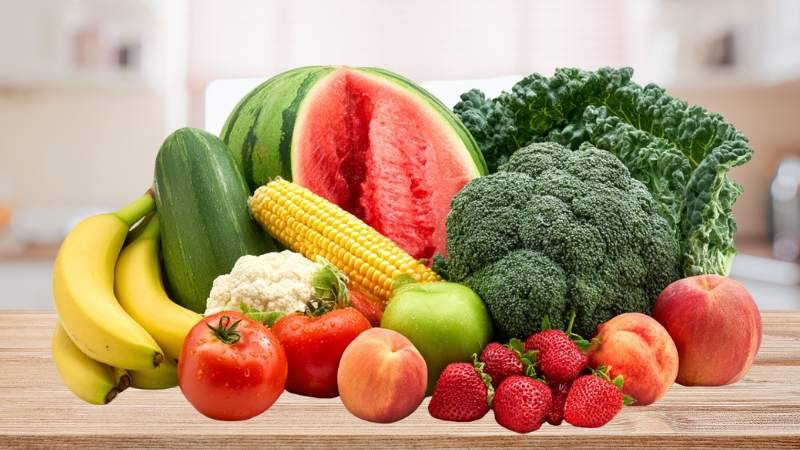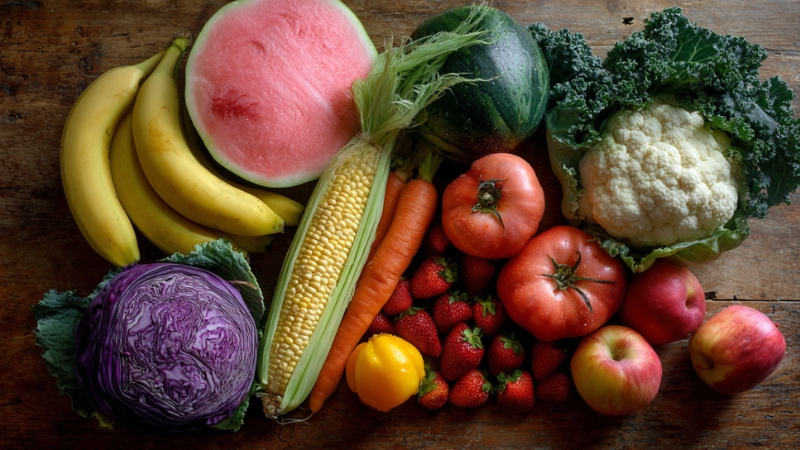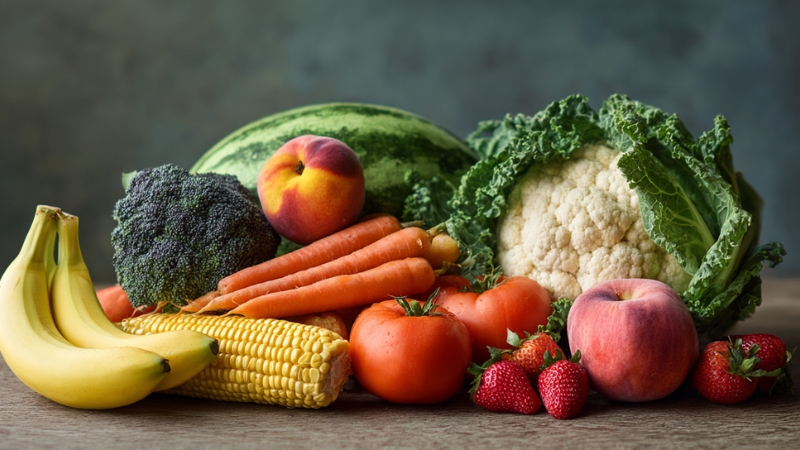Man-Made Fruits and Vegetables, You Might Have Some at Home Right Now!
Did you know that most of the fruits and vegetables you eat every day didn’t actually exist in nature the way we see them today? Bananas, carrots, broccoli, corn, and even watermelons are all products of centuries of human cultivation and selective breeding.
They didn’t grow this way on their own; farmers, botanists, and ancient civilizations carefully shaped them through hybridization, cross-pollination, and genetic selection to improve their taste, size, and resistance.
So, to answer the big question right away: Yes, many of the fruits and vegetables sitting in your kitchen are man-made.
They weren’t created in a lab overnight, but rather through generations of natural selection guided by human hands. The result? Sweeter, larger, and more visually appealing foods that look nothing like their wild ancestors.
The Science Behind Man-Made Produce

Man-made doesn’t mean artificial. It simply means humans intervened in nature’s process to get desirable traits, fewer seeds, sweeter taste, better color, or easier growth.
This process, known as selective breeding, began thousands of years ago when early farmers noticed that certain plants produced better crops than others. They saved seeds from those plants, replanted them, and repeated the process generation after generation.
Over time, this careful selection completely transformed wild plants into the fruits and vegetables we know today. In the modern age, scientists also use hybridization (crossing two related species) and, more recently, genetic modification (GMOs) to speed up these natural processes.
Common Man-Made Fruits and Vegetables
Food
Original Wild Ancestor
What Changed
Created By / Process
Fun Fact
Banana
Wild banana (Musa acuminata & Musa balbisiana)
Had large seeds and little pulp
Ancient hybridization
Modern bananas are sterile; they don’t produce seeds!
Carrot
Wild carrot (Daucus carota)
Originally thin, white, or purple, bitter
Selective breeding (Persia, ~1,000 years ago)
Orange carrots were bred in the Netherlands in honor of the royal House of Orange.
Broccoli
Wild cabbage (Brassica oleracea)
Thick flower buds, sweeter taste
Cultivation by the Romans
Broccoli, cabbage, kale, and cauliflower are all from the same plant species!
Corn (Maize)
Teosinte grass (Central America)
Tiny kernels, hard shell
Mesoamerican farmers, ~7,000 years ago
Modern corn has 900% more sugar than its ancestor.
Watermelon
Wild watermelon (Citrullus lanatus)
Bitter and small with tough rind
Selective breeding in Africa
Ancient Egyptian paintings show early watermelons, green but not sweet.
Peach
Wild peach (China)
Tiny fruit, large pit
Cultivation ~4,000 years ago
Ancient peaches were the size of cherries!
Tomato
Wild cherry tomato (South America)
Small and tart
Mesoamerican farmers
Tomatoes were once thought to be poisonous in Europe.
Strawberry
Wild woodland strawberry
Small, less sweet
Hybridization (France, 18th century)
Modern strawberries are hybrids of two wild species from North and South America.
Cabbage / Kale / Cauliflower
Wild mustard plant
Different leaf and bud forms
Artificial selection
One ancestor, many vegetables, the power of selective breeding.
Apple
Wild crabapple
Small, sour fruit
Cross-breeding
There are over 7,500 apple varieties today, all man-made selections.
What Makes These Foods “Man-Made”?
View this post on Instagram
These foods weren’t “manufactured” like candy bars; they were engineered through time and biology. Humans identified traits, sweetness, size, or texture, and kept enhancing them through reproduction cycles.
Here’s how that process looks in action:
- Selection: Farmers choose plants with desirable traits (sweeter, bigger, softer).
- Breeding: They cross those plants to combine or reinforce traits.
- Cultivation: Seeds from the best plants are grown again and again.
- Domestication: Over centuries, wild species lose their original features and become dependent on humans for reproduction.
For example, wild bananas had hard seeds and little flesh, unpleasant to eat. By continuously selecting softer, seedless varieties, humans created the sweet, seedless banana we enjoy today, one that now can’t even reproduce naturally and must be cloned from cuttings.
The Modern Twist: Hybrids and GMOs
In recent decades, hybridization and genetic modification have taken these natural processes further.
Hybrid fruits like tangelos (tangerine + grapefruit) or pluots (plum + apricot) are results of cross-breeding between species, while GMOs involve directly editing DNA to make crops pest-resistant or more nutritious.
Modern Example
Type
Parent Species / Modification
Benefit
Tangelo
Hybrid
Tangerine + Grapefruit
Juicy and easy to peel
Pluot
Hybrid
Plum + Apricot
Sweeter and smoother skin
Seedless Watermelon
Hybrid
Chromosome manipulation
No seeds, longer shelf life
Golden Rice
GMO
Rice + Vitamin A gene
Prevents vitamin A deficiency in developing countries
Sweet Corn (modern)
Selective breeding & GMO
Enhanced sugar gene
Extra sweet and tender kernels
Why It Matters

Man-made fruits and vegetables show how deeply humans have shaped nature for survival and comfort. Selective breeding helped civilizations secure food sources, improve nutrition, and adapt crops to local climates.
Without these interventions, we wouldn’t have the colorful grocery aisles we know today.
Yet, it’s also important to remember that not all changes are perfect. Some modern breeds sacrifice nutrient density for sweetness or resilience for appearance.
Wild varieties often contain higher levels of minerals and antioxidants, reminding us of the balance between innovation and natural diversity.
The Bottom Line
@wildtimespodcast Many fruits and vegetables we know are man made 🌽 . . . . #wildtimespod #podcastclips #podcast #animals #wildlife #animalfacts #animalnews #corn #food #history ♬ original sound – The Wild Times Podcast
Most of what you eat, from corn on your plate to the bananas in your smoothie, is man-made by centuries of human innovation.
Many of the most popular healthy vegan snacks today also come from this same process of careful cultivation, shaped to balance taste, texture, and nutrition.
These foods are not artificial or harmful; they’re the result of humanity’s long relationship with the earth, guided by curiosity, necessity, and a desire for better taste.
Next time you take a bite of your favorite fruit or vegetable, remember: you’re tasting a piece of human history, one that was crafted, not discovered.

